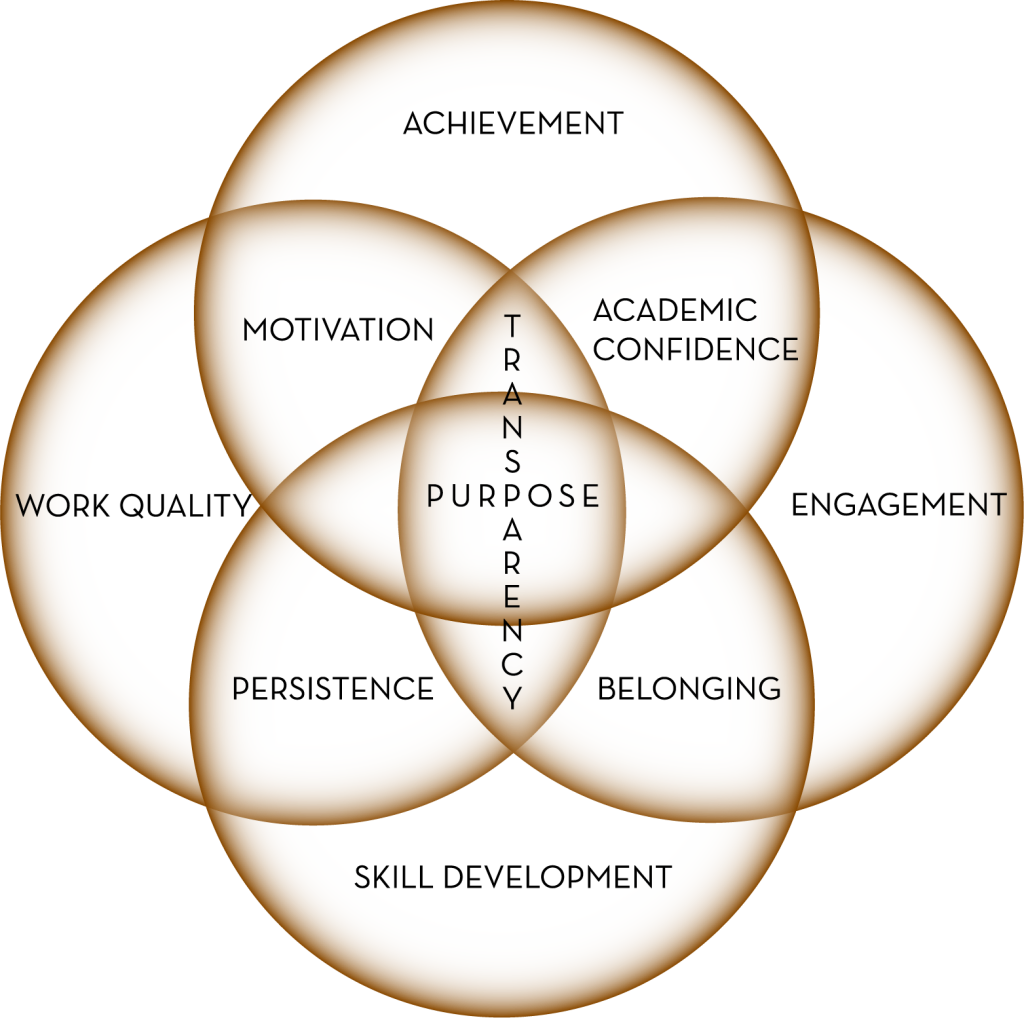How Transparency + Purpose in Your Course Syllabus Can Enhance Student Motivation
The syllabus shapes students’ interest and expectations for success as they form first impressions of the instructor and the course. Transparent and purposeful communication at the outset of the course can motivate students and bolster their academic confidence with clear explanations of what they will learn, why these concepts and skills are important, and how the instructor designed the activities, assessments, and teaching methods to help them learn. Communicating the purpose of learning is a critical component of transparency. Students are able to appreciate the value in their coursework when instructors communicate how particular activities and assignments come together to help them learn key concepts and build crucial skills for future classes or careers (Canning & Harackiewicz, 2015; Harackiewicz et al., 2016).
-Rachel Gable
Unpack the Hidden Curriculum
Transparent teaching methods are easy and quick to implement and improve students’ achievement, belonging, and academic confidence (Winkelmes et al., 2016). These benefits are even more pronounced for first-generation, low-income, and underrepresented college students, who often experience having to learn tacit norms and unspoken expectations that make up a “hidden curriculum” for how to navigate their courses as well as interactions with faculty and other students. Students with experience in similar educational contexts or who have family members who attended college are often aware of these unspoken rules, or they can seek guidance from family and friends when they are unsure about how to navigate interactions with their professors or peers. However, as Rachel Gable (2021) explains, “those with little prior experience learn the contours [of the hidden curriculum] through a series of missteps, trial and error, and baffling encounters they struggle to explain,” based on interviews with first-generation and their continuing generation peers at Harvard and Georgetown.
Clear communication in the syllabus can unpack this “hidden curriculum” by clarifying the unspoken rules for success in each educational context. Common examples of the hidden curriculum include:

- How to approach office hours,
- How to address your instructor or teaching assistant,
- What to say in class discussions,
- How to collaborate with other students and work effectively in teams,
- What to do after an academic setback.
More specifically, a transparent and purposeful syllabus reveals the hidden curriculum by clarifying the purpose of office hours, articulating the goals of class discussions, providing guidelines to support collaboration, and explaining where and how students can get help. These simple additions to the syllabus can be particularly helpful for those who lack the academic background or social capital to inform them, implicitly, of how to navigate academic contexts and succeed in their coursework
Create a Transparent & Purposeful Syllabus
The MIT TLL Syllabus checklist highlights transparency and purpose as one of three pedagogical principles that underlie effective, evidence-based course design and teaching practices.
A transparent and purposeful syllabus:
- Defines what students will know and be able to do by the end of the course
- Clarifies what, why, and how students will complete major assessments
- Describes typical class sessions, emphasizing how and why students are expected to participate
- Explains how students can get help outside of class
- Provides detailed course policies with a clear rationale
A simple framework for integrating transparency is to explain what (e.g., the task or policy), why (the purpose), and how (expectations and/or process). As a model of transparency, this blog post focuses on what a transparent and purposeful syllabus is and why it matters for equitable student learning experiences. To explore how to create a transparent and purposeful syllabus, explore the checklist that includes specific features of transparent and purposeful syllabi and examples of how these features are applied in MIT subject syllabi.
The syllabus is only the starting point for transparent and purposeful communication; the same features described above can also be integrated into regular communications on Canvas and in class to introduce class activities and assignments, to reiterate the availability of help outside of class, and to highlight the relevance of the concepts and skills beyond the classroom.
Additional resources
Course Design: Backward Design
First Day of Class
Using a Transparent Framework to Remove Barriers to College Students’ Success (video)
Transparent Teaching Methods (from the Transparency in Learning and Teaching Project)
Transparent Assignments: Examples and Templates
References
Canning, E. A., Harackiewicz, J. M., Priniski, S. J., Hecht, C. A., Tibbetts, Y., & Hyde, J. S. (2018). Improving performance and retention in introductory biology with a utility‑value intervention. Journal of Educational Psychology, 110(6), 834–849. https://doi.org/10.1037/edu0000244
Harackiewicz, J. M., Canning, E. A., Tibbetts, Y., Priniski, S. J., & Hyde, J. S. (2016). Closing achievement gaps with a utility-value intervention: Disentangling race and social class. Journal of Personality and Social Psychology, 111(5), 745. https://doi.org/10.1037/pspp0000075
Gable, R. (2021). The hidden curriculum: First generation students at legacy universities. Princeton University Press.
Transparency in Learning & Teaching Project (2024). Transparent Methods. https://www.tilthighered.com/transparent-methods.
Winkelmes, M., Bernacki, M., Butler, J., Zochowski, M., Golanics, J., & Weavil, K. H. (2016). A teaching intervention that increases underserved college students’ success. Peer Review, 18(1), 31-36.

